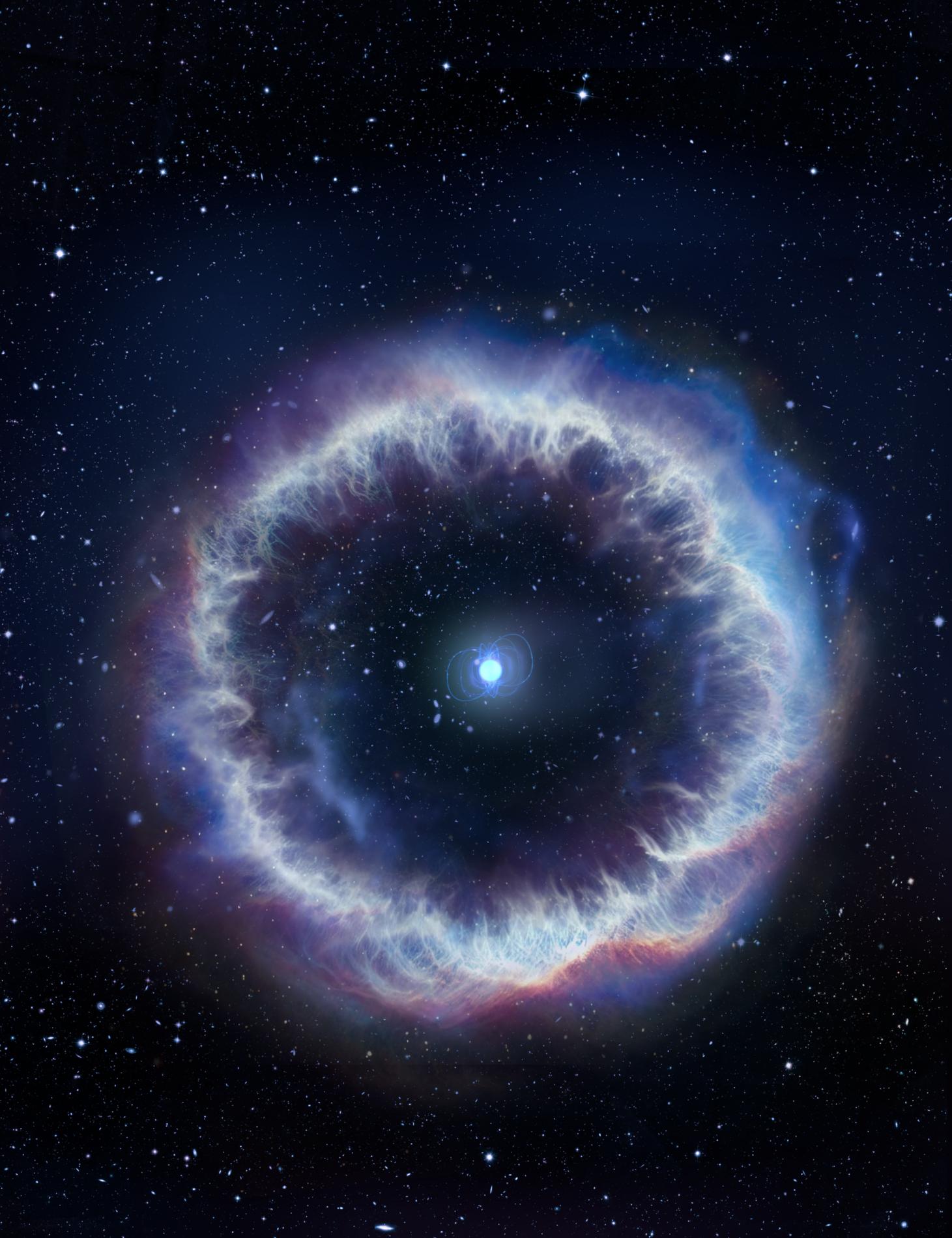Origin of persistent emission in enigmatic Fast Radio Bursts revealed
A new international study involving the IAA-CSIC identifies a plasma bubble as the origin of the persistent emission observed in some fast radio bursts (FRBs)
The data also allow researchers to determine the nature of the "engine" that powers these mysterious sources
The results are published today in Nature
Fast radio bursts (FRBs) are one of the most powerful and enigmatic cosmic events in the universe. Discovered just over a decade ago, these bursts release an immense amount of energy in milliseconds, making them one of the most energetic types of phenomena observed to date. However, the physical processes that give rise to them are still unknown and represent one of the most fascinating open questions in modern astrophysics today. In some cases, the brief flash of an FRB is accompanied by persistent fainter radio emission. An international team, led by the Italian National Institute of Astrophysics (INAF) and with the participation of IAA-CSIC, has shown that this persistent radiation originates from a plasma bubble, providing new information on the nature of these mysterious cosmic phenomena. The results of this study are published today in the journal Nature.

A PLASMA BUBBLE
This new study, which also involved an international team of research institutes and universities from Italy, China, the United States, Spain and Germany, has recorded the faintest persistent radio emission ever detected for an FRB. This is FRB20201124A, a fast radio burst whose source is located in a galaxy about 1.3 billion light-years away from Earth.
The observations were made with the world's most sensitive radio telescope, the Very Large Array (VLA) in the United States. The data allowed the scientists to verify the theoretical prediction that a plasma bubble is at the origin of the persistent radio emission from fast radio bursts. "We were able to show through observations that the persistent emission observed in some fast radio bursts behaves as expected from the nebular emission model, i.e. a 'bubble' of ionised gas surrounding the central engine that generates the FRB," explains Gabriele Bruni, a researcher at INAF in Rome and lead author of the new paper. "In particular, through radio observations of FRB20201124A, one of the bursts that has occurred closest to Earth, we were able to measure the faint persistent emission coming from the same location as the FRB, extending the range of radio fluxes explored so far for these objects by two orders of magnitude."
A RECURRING BURST
FRB 20201124A is a rare recurring event, as only about 10% of the approximately 800 known FRBs repeat. It was first detected on 24 November 2020, and in March 2021 fast radio bursts from the same region of the sky were recorded again.
"Thanks to this fact and using very long-baseline interferometry, it has been possible to determine its position within the host galaxy with an uncertainty of a few milliseconds of arc," explains Ángela Gardini, researcher at the IAA-CSIC and one of the co-authors of the paper. "Its precise location and relatively small proximity to other FRBs made it an ideal target for studying the physical conditions of its environment."
OBSERVATIONS WITH THE MEGARA INSTRUMENT
In previous work, the researchers had identified persistent emission in the host galaxy of this FRB, but had not been able to measure the position of the burst precisely enough to associate the two phenomena. "In this new work, we carried out a campaign at a spatial resolution that was crucial to separate the compact source from the faint diffuse emission," explains Luigi Piro, INAF researcher and member of the team behind the paper.
The campaign was complemented by observations in different bands with the NOEMA interferometer and the MEGARA instrument on the Gran Telescopio Canarias (GRANTECAN), which proved to be decisive. "The observations obtained with the MEGARA instrument reached a resolution comparable to the radio resolution of the VLA, which allowed us to observe the environment of the FRB in detail never achieved before and to discover the presence of a compact radio source - the FRB's plasma bubble - immersed in a star-forming region."
"The fact that we were able to map the ionised hydrogen emission (star-forming tracer) with MEGARA to a high level of detail allowed us to calculate the star formation rate around the FRB," says Angela Gardini. "The value we obtained turned out to be too low to justify the observed persistent radio emission, which must therefore have been generated by a compact source associated with the FRB and not by star formation," says the IAA-CSIC researcher.
THE ENGINE OF THE BURST
This research also helps to pinpoint the nature of the engine that powers these mysterious bursts. According to the new data, the phenomenon is based on a magnetar (a strongly magnetised neutron star) or a high-accretion X-ray binary system, i.e. a binary system consisting of a neutron star or a black hole accreting material from a companion star at very intense rates. In fact, the winds produced by the magnetar or X-ray binary system would be able to "blow" the plasma bubble, leading to persistent radio emission. Therefore, there is a direct physical link between the FRBs' engine and the bubble, which would be in its immediate vicinity.
"Understanding the nature of the persistent emission associated with FRB20201124A adds a piece to the puzzle about the nature of these mysterious cosmic sources," concludes the first author of the paper.
- 'A nebular origin for the persistent radio emission of fast radio bursts'
- DOI: 10.1038/s41586-024-07782-6
- Ángela Gardini - gardini [at] iaa.es
- Instituto de Astrofísica de Andalucía (IAA-CSIC)
- Unidad de Divulgación y Comunicación
- Emilio García, garcia@iaa.es, 649 407 445 (vía whatsapp)
- Celia Navas, navas@iaa.es
- https://www.iaa.csic.es
- https://divulgacion.iaa.csic.es

